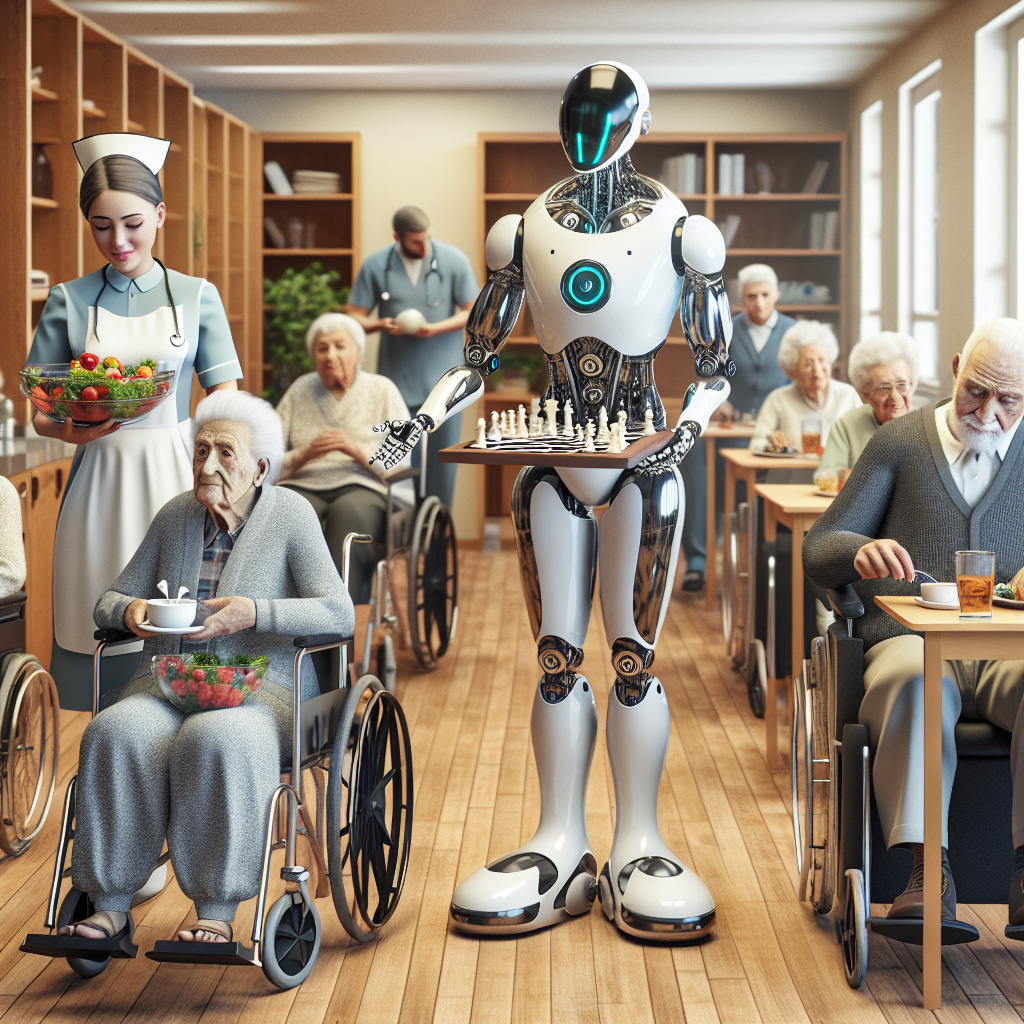New York, NY—In an era where the burgeoning elder population strains the availability of human caregivers, the surge of robotics in nursing homes hovers on the horizon like the double-edged sword of modernity. As facilities across the globe begin deploying robots for tasks ranging from companionship to more complex medical procedures, the question arises: Is this the dawn of a tech salvation for elder care, or are we stepping into a dystopian nightmare?
Across Japan, a leader in both aging demographics and robotic innovation, robots are increasingly becoming a staple in elder care. With over 28% of its population aged 65 and above, the country has turned to technology to bridge the gap in human care providers. A notable testament to this shift is the introduction of robots like “Robear,” designed to lift patients from their beds and assist in walking, thereby reducing the physical strain on human caregivers.
However, this intersection of technology and care is not without its critics. Many experts argue that the rise of robots in such a sensitive and personal field as elder care could lead to increased isolation among the elderly, a group already at high risk of loneliness. “The essence of care is human interaction and empathy, something no robot can replicate,” states Dr. Sarah Harper, a gerontologist at Oxford University. Indeed, as much as technology advances, the human element in caregiving remains irreplaceable in terms of emotional and social needs.
Yet, proponents argue that the use of robots can free human caregivers to focus on the more personal aspects of care. The argument weighs heavily on statistics like those reported by the International Federation of Robotics, which states that sales of professional service robots have already seen an uptick by 32% in recent years. This suggests a trend towards acceptance and integration of robotics in sectors requiring skilled labor, including health care.
Ethical considerations also play a significant role in this debate. Questions about privacy, autonomy, and the potential for dehumanization are at the forefront of discussions. As nursing homes adopt these technologies, the need for rigorous ethical frameworks and regulations becomes paramount to ensure that the welfare and dignity of the elderly are prioritized.
Innovations in robotics hold the promise of solving many logistical challenges faced by nursing homes, from staffing shortages to the high demands of physical care. Yet, as this technology advances and becomes more integrated into our lives, society must tread carefully to balance efficiency with empathy. Only then can we ensure that the future of elder care remains bright, not bleak, in the age of robotics.


